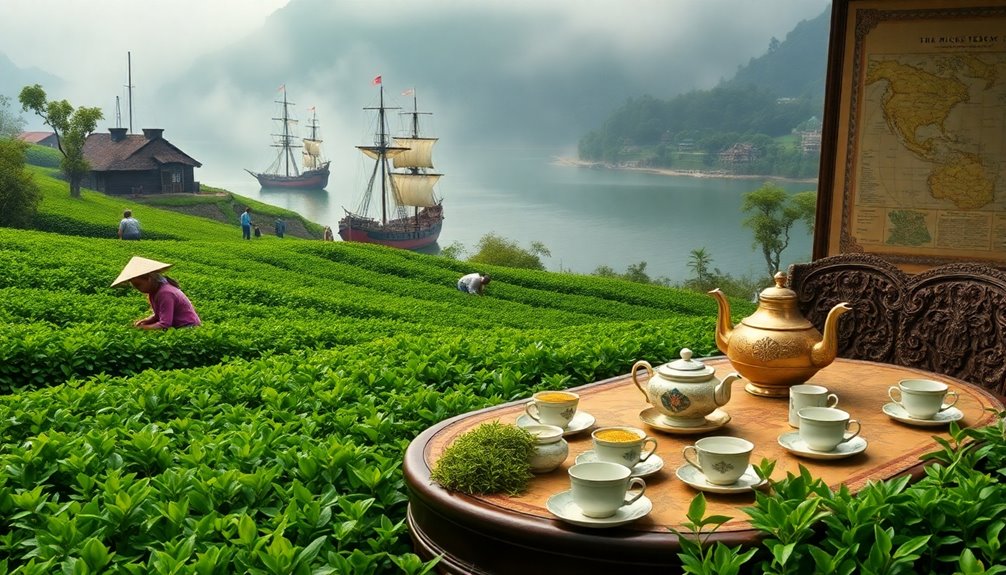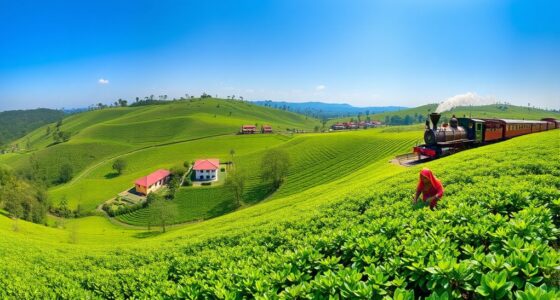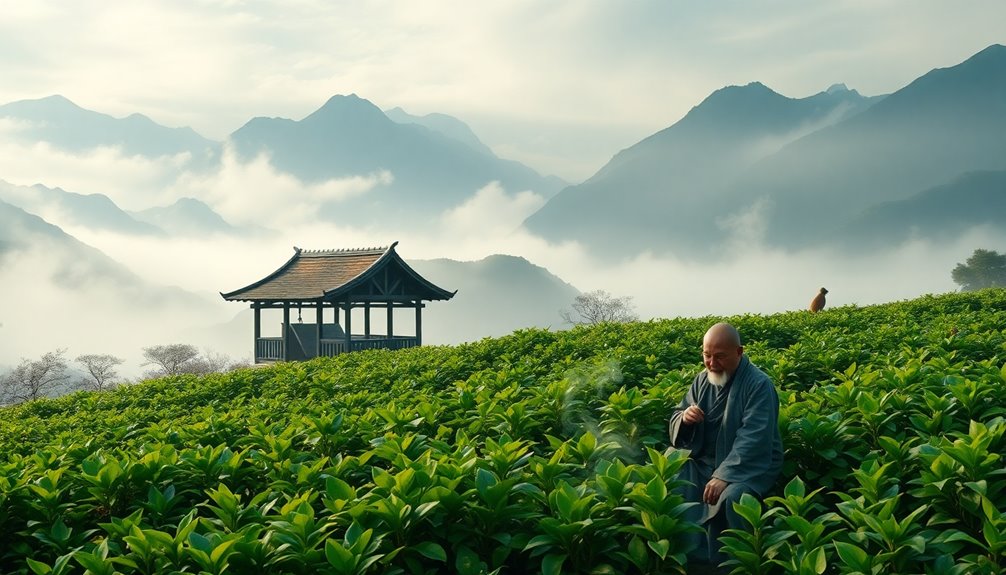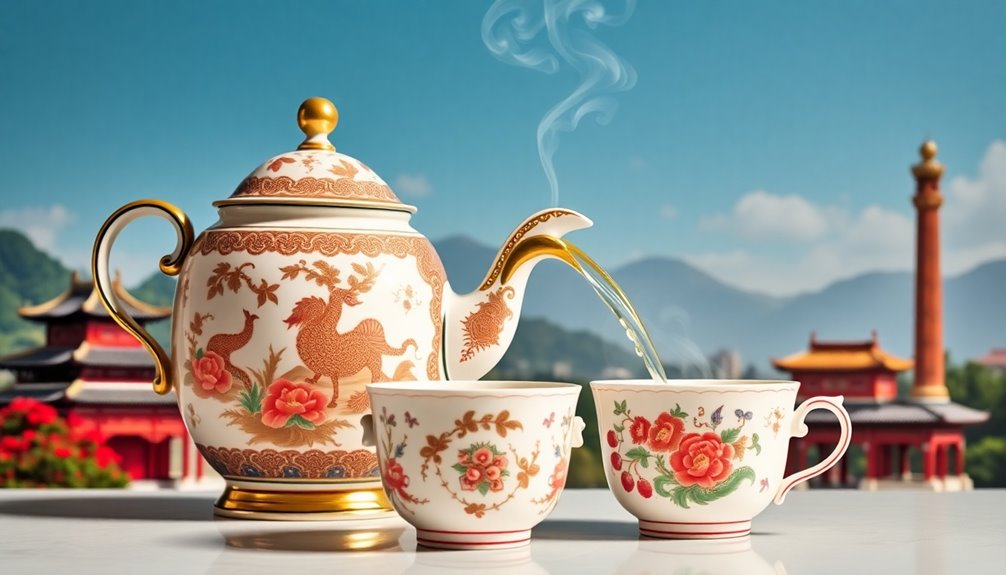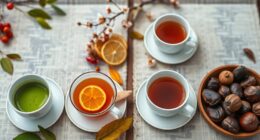Tea's history has shaped empires in amazing ways! Originating in China, it became a treasure in the 17th century, leading to the British Empire's trade boom. The British East India Company created trade routes and tea plantations, especially in India, transforming local economies. Tea also played a crucial role in diplomacy, bringing nations together over a cup. While it celebrated cultures, harsh labor conditions affected workers' lives. Learning about tea's impact reveals the complex stories behind this beloved drink, showing how it connects us all. Keep exploring, and you'll uncover even more fascinating tales about tea's powerful history!
Key Takeaways
- Tea's emergence as a lucrative commodity in the 17th century significantly influenced global trade and the economic expansion of the British Empire.
- The establishment of tea plantations in India transformed local economies and highlighted the exploitation of indigenous labor under colonial practices.
- Colonial trade routes facilitated extensive maritime networks, allowing the British East India Company to dominate the tea trade and secure wealth.
- Tea played a critical role in geopolitical tensions, notably during the Opium War, which underscored the intersection of trade and diplomacy.
- Today, tea continues to serve as a diplomatic tool, fostering international relations and cultural exchange among nations.
Introduction
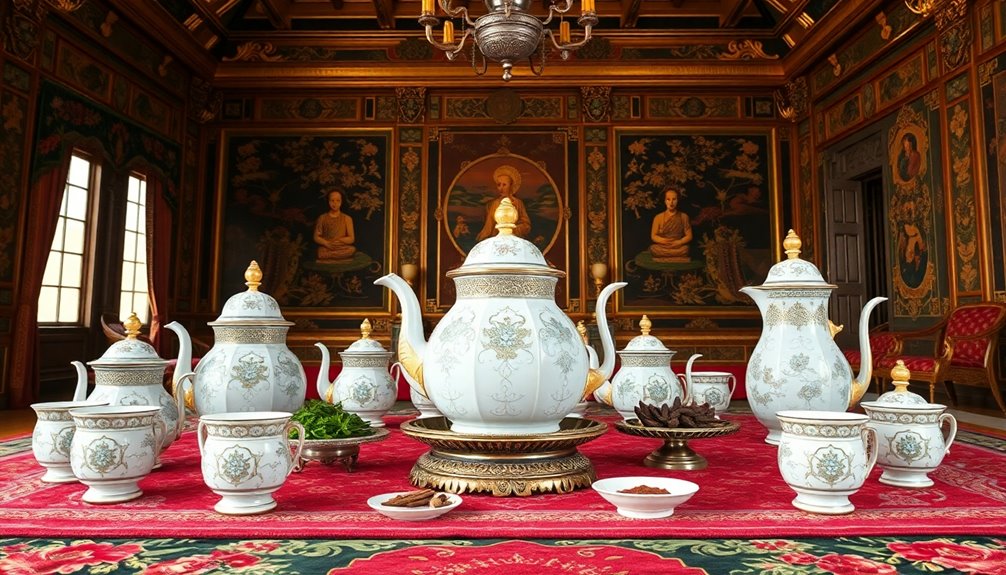
As you delve into the fascinating intersection of tea and empires, you'll discover how this humble beverage transformed global trade and shaped colonial ambitions. Originating in China, tea quickly became a sought-after commodity in the 17th century. It significantly influenced the economic history of the British Empire, as they sought new avenues for trade and expansion.
Tea wasn't just a drink; it became a symbol of British imperialism, reflecting national pride and domestic values. The British established tea plantations in India to compete with Chinese tea, reshaping local economies and bolstering colonial pursuits. This move highlighted how vital tea was to British trade, especially during the Opium War, which showcased the geopolitical tensions arising from such dependencies.
Moreover, tea influenced social customs, creating a distinct culture around its consumption. Marketing strategies, particularly in the 19th and 20th centuries, linked tea to femininity and the domestic sphere, further embedding it into the fabric of British identity.
Through all these connections, tea played a vital role in the rise of the global tea industry, marking its place in history as more than just a beverage but a catalyst for change.
Colonial Trade Routes Established
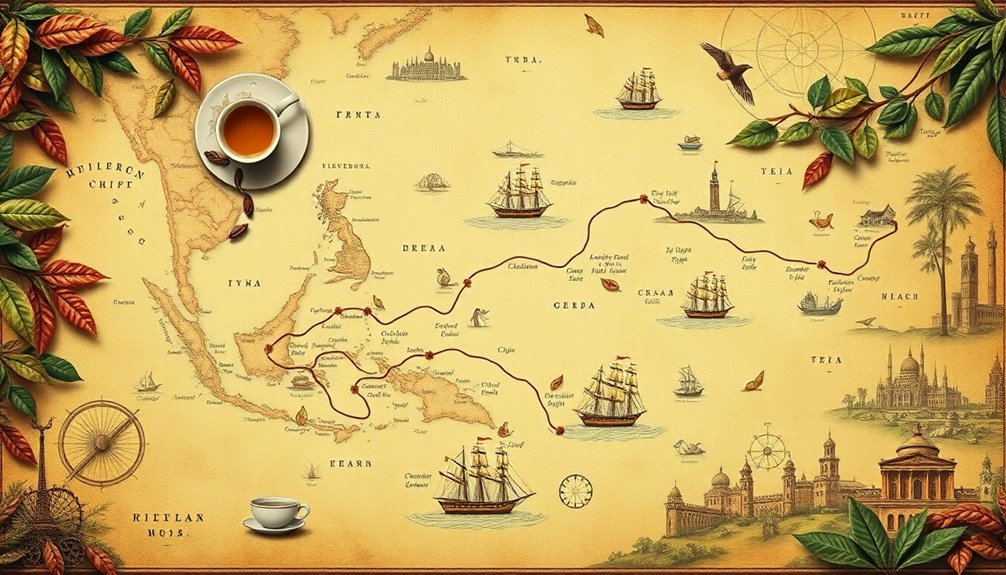
The British Empire's establishment of colonial trade routes for tea revolutionized global commerce in the 17th century. As traders from Europe first interacted with China, they created extensive maritime networks to transport tea.
The British East India Company played a crucial role here, securing exclusive trading rights and monopolizing tea imports by the 18th century. This not only made tea a popular drink but also integrated it into the international economy.
In India, British colonialism led to the establishment of tea plantations in regions like Assam. These plantations transformed local economies and created new colonial trade routes that competed with Chinese tea exports.
However, the Opium Wars of the 19th century changed the game. Britain faced trade deficits with China, so it increased opium exports to balance trade, which significantly influenced global trade dynamics.
Tea's Role in Global Diplomacy
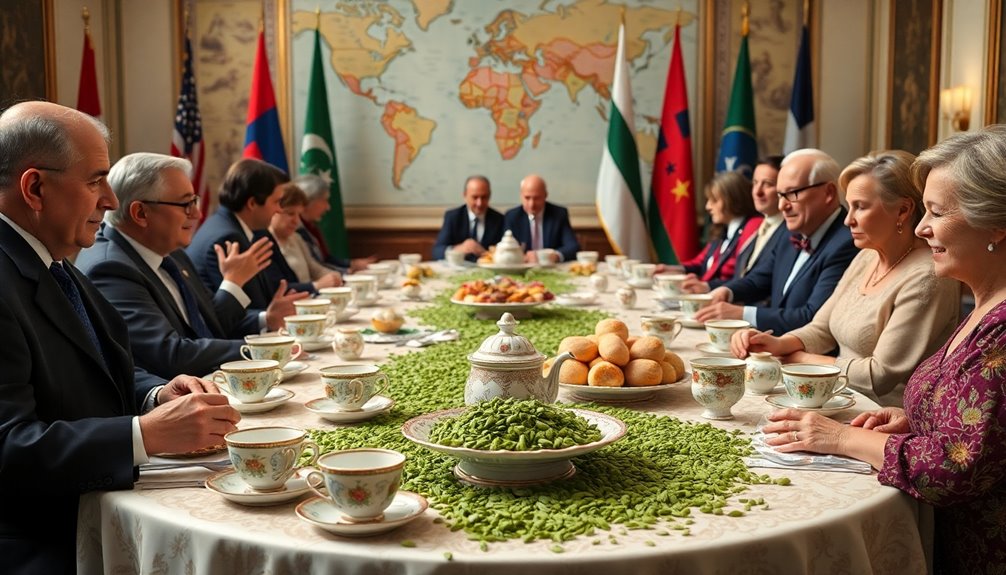
Even in the post-colonial era, tea continued to play a role in diplomacy.
Countries still use tea diplomacy to enhance bilateral relations and showcase their cultural heritage during state visits and global summits.
It's fascinating how a simple cup of tea can carry so much weight in international affairs, turning a beverage into a tool for peace and connection.
Tea and Indigenous Cultures
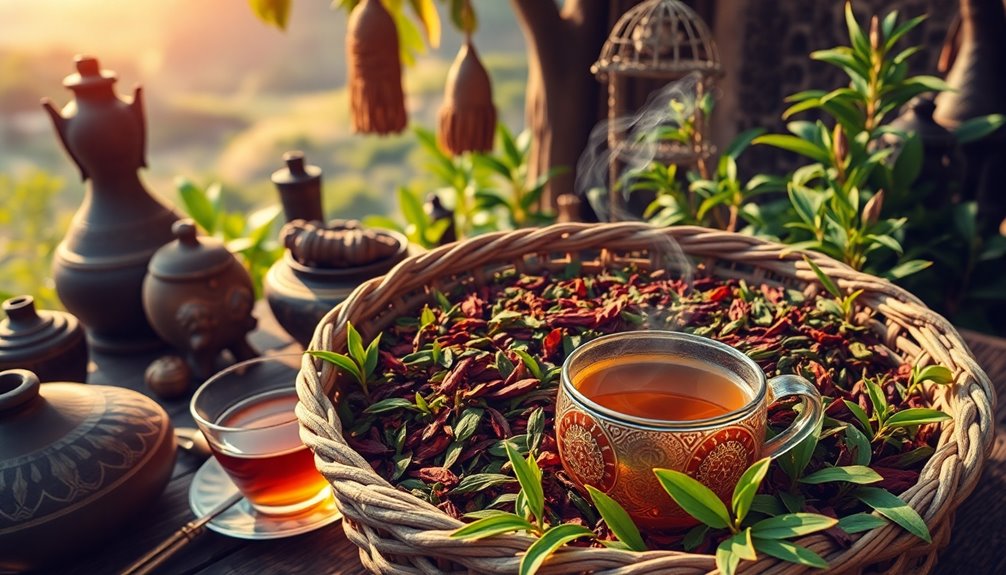
Today, some indigenous communities are reclaiming their heritage by reviving traditional tea practices and promoting native tea varieties.
By doing so, they challenge the dominant market narratives and celebrate the significance of tea in their lives.
As you enjoy your next cup, remember the deep history and cultural ties that make tea so special for these communities.
Economic Exploitation of Labor
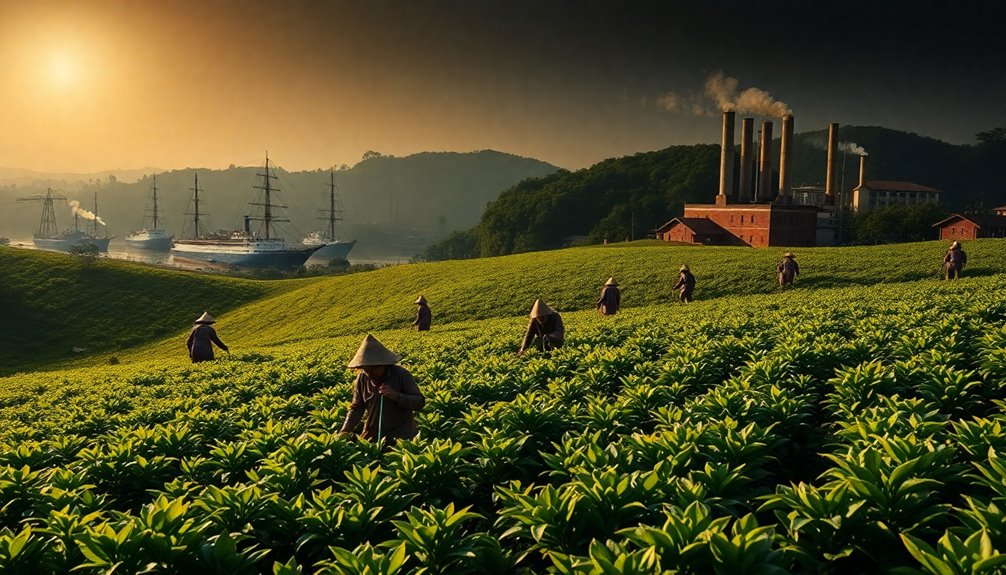
Countless workers have faced economic exploitation in the tea industry, particularly during the British colonial era in India. The British Empire established tea plantations that relied heavily on local labor, often in harsh conditions and for low wages. Workers were caught in a system of indentured labor, meaning they'd to work for little pay and limited rights. This situation created cycles of poverty and dependency that affected families for generations.
With no labor regulations or oversight, plantation owners could prioritize profits over the well-being of their workers. This exploitation didn't end with the British Empire; even after colonial times, neocolonial strategies came into play. Multinational corporations continued to exploit labor, seeking to control tea production and distribution while harming local communities.
The economic exploitation of labor in tea production reinforced colonial power dynamics and created social hierarchies. It affected not just the workers but also their families and communities, leading to lasting inequalities.
Understanding this history helps you see the bigger picture of how tea shaped empires and the lives of those who grew it. By recognizing these past injustices, we can work toward a fairer future in the tea industry.
Practical Applications
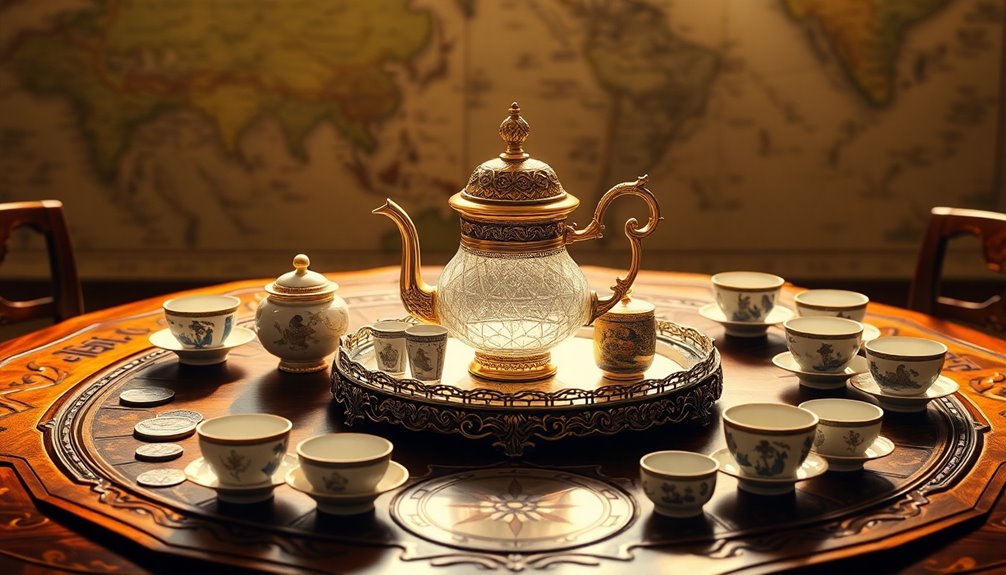
Additionally, keep an eye on emerging Indian tea brands. They reflect shifting consumer preferences and highlight a vibrant, evolving landscape.
As you sip your tea, remember the connection it has to the world and how it once fueled the Thirst for Empire. By making mindful choices, you can enjoy tea while contributing to a brighter future for the global tea industry.
Frequently Asked Questions
How Did Tea Influence Social Customs in Different Cultures?
Tea influences social customs worldwide by fostering gatherings, promoting hospitality, and blending traditions. You'll find it at ceremonies, casual meet-ups, and as a symbol of status, shaping relationships and cultural practices in diverse societies.
What Were the Health Benefits of Tea in Historical Contexts?
Tea's health benefits in historical contexts included improved digestion, increased energy, and enhanced mental clarity. You'd find various cultures using tea to promote wellness, believing it aided in longevity and overall vitality throughout centuries.
Did Tea Impact Women's Roles in Society?
Tea's introduction into society transformed women's roles significantly. It fostered social gatherings, enabling women to connect, share ideas, and influence public life. You'd see them becoming more active participants in cultural and political discussions.
How Did Tea Affect Artistic Expressions and Literature?
Tea's influence on artistic expressions and literature is profound. You'll find countless poems, paintings, and stories inspired by its rituals, flavors, and social gatherings, reflecting cultural shifts and the intimate moments shared over a cup.
What Are Modern-Day Implications of Tea's Historical Significance?
Tea's historical significance influences today's global trade, cultural exchanges, and social rituals. You notice its impact in modern cafes, diplomatic gatherings, and wellness trends, reflecting a deep-rooted connection that continues to shape societal interactions worldwide.
Conclusion
In conclusion, tea has shaped our world in amazing ways! From connecting cultures to influencing trade routes, it's more than just a drink. It played a big role in diplomacy and even impacted indigenous communities. We should remember the stories behind every cup we enjoy. So, next time you sip your favorite tea, think about its rich history and the connections it creates. Let's celebrate tea not just for its flavor, but for its incredible journey through time!

